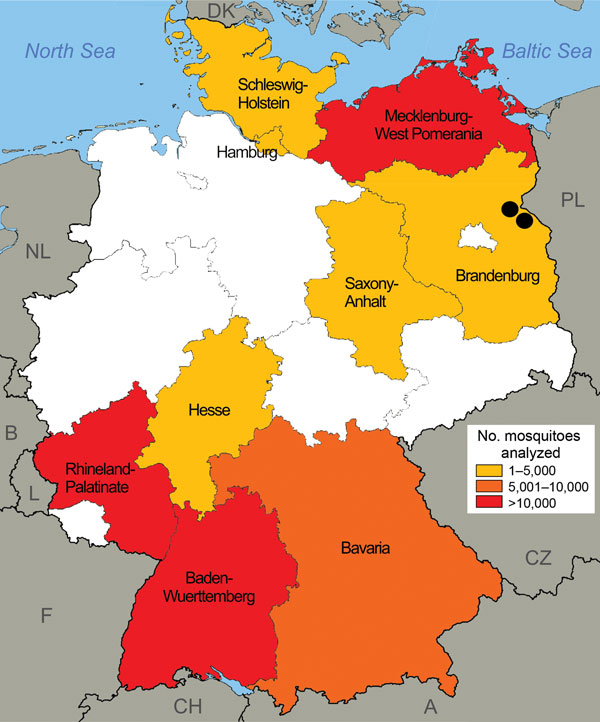Volume 20, Number 2—February 2014
Letter
Stable Transmission of Dirofilaria repens Nematodes, Northern Germany
Figure

Figure. . Origin of mosquito samples analyzed for infection with Dirofilaria repens, by federal state, Germany, May–September 2011 and 2012 (n = 74,547). Black dots indicate collection locations of mosquitoes that tested positive for D. repens DNA.
Page created: January 17, 2014
Page updated: January 17, 2014
Page reviewed: January 17, 2014
The conclusions, findings, and opinions expressed by authors contributing to this journal do not necessarily reflect the official position of the U.S. Department of Health and Human Services, the Public Health Service, the Centers for Disease Control and Prevention, or the authors' affiliated institutions. Use of trade names is for identification only and does not imply endorsement by any of the groups named above.